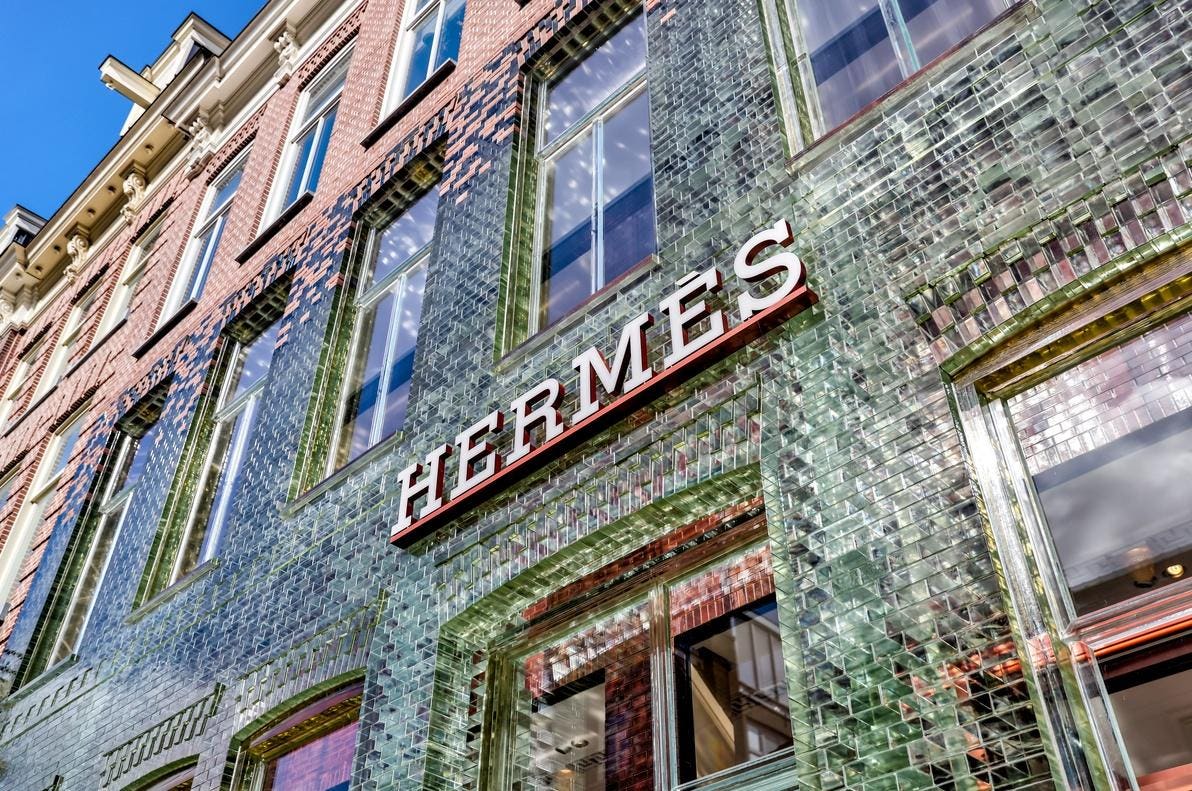Against a backdrop where the personal luxury market declined 2% in 2024 and only about one-third of luxury brands achieved growth last year, Hermès went into overdrive, rising 15% at constant exchange rates year-over-year to reach nearly $16 billion (€15.2 billion).
After Hermès growth slowed in second and third quarter, 13% and 11% respectively, fourth quarter revenues shot up 18% to $4.2 billion (€4 billion). Even luxury leader LVMH dropped 2% year-over-year, including a 2% shortfall in the second half of 2024, and number two Kering was off 12% in the fourth quarter, capping a dismal year down 12%.
“In 2024, in a more uncertain economic and geopolitical context, the solid performance of the results attests to the strength of the Hermès model and the agility of the house’s teams, whom I thank warmly,” said executive chairman Axel Dumas in a statement.
To make that thank you more meaningful, the company will reward all 25,000 employees a roughly $4,700 year-end bonus (€4,500), topping the $4,100 (€4,000) bonuses handed out in 2022 and 2023.
Acknowledging the company’s commitment to being a responsible employer that “shares the fruit of its growth with those who contribute every day to it,” Dumas also assured investors and employees the company will stay the course preserving its “fundamental values of quality, creativity and savoir-faire;” in other words, the company’s know how.
While currency fluctuations had a negative $246 million (€ 235 million) impact on revenues, consolidated net profit grew 7% to $4.8 billion (€4.6 billion). At closing on Friday, Hermès stock in Paris was up over 4% and jumped nearly 25% this year.
Geographical Expansion
All geographies contributed to the quarterly and annual uptick. Even in Asia, pulled down by a luxury market decline between 18% and 20% in China, according to Bain, Hermès scored a win with annual revenues up 10% overall, including 23% growth in Japan. Asia is Hermès top market at $8.5 billion, accounting for over half of total revenues.
In remarks, Dumas affirmed that all countries in Asia, including China, grew in 2024. He added predicting 2025 prospects for China is “complicated,” yet said, “Big picture: there’s some positive signs.”
Europe is the company’s second largest market and grew 17% year-over-year to $3.8 billion. This comes against a luxury market that was basically flat there, according to Bain. France, up 14%, was a bit weaker than the rest of Europe which advanced 19% year-over-year.
Number three market, the Americas, produced 16% growth to $3 billion and bounced 22% in the fourth quarter. Fourth quarter sales were bolstered by the opening of a new store in Princeton, NJ and reopening of its relocated Atlanta store, bringing the number of U.S. stores to 41.
While Hermès has little penetration in the Middle East and other markets – less than 5% of annual revenues – it doubled sales there last year. Hermes will continue to “integrate sales” in the region, Dumas said in the earning call, with emphasis on stores in Dubai and Abu Dhabi.
All But One Product Category Grew
Leather goods and saddlery, its top performer generating just under one-fourth of revenues, led all categories in growth up 18% to $6.8 billion.
Following that in size, was ready-to-wear and accessories at $4.6 billion and up 15%. Its other sectors category is number three at $2 billion, which includes jewelry and Hermès home products. Combined, jewelry and home goods advanced 17% year-over-year.
Silk and textiles were a relatively poor performer last year, up a modest 4% to $1 billion, but the category turned more positive in the fourth quarter posting 7% growth.
Perfume and beauty ended the year at $560 million and grew 9% year-over-year and 17% in the fourth quarter. Hermès remains heavily invested in perfume and makeup, including lipsticks and nail polish. In skincare, the largest category in beauty, it continues to “try to find the right way,” i.e. the Hermès way of doing it.
Watches was the sole exception among Hermès product categories, dropping 4% to $604 million. However, it released the tenth anniversary watch collaboration with Apple late last year, so watches may get a bump in 2025.
Outlook Remains Positive Despite Uncertainties
Hermès affirmed an “ambitious goal for revenue growth” in 2025, though it didn’t announced targets, recognizing the prevailing “economic, geopolitical and monetary uncertainties.”
“The group embarks on 2025 with confidence, thanks to its highly integrated artisanal model, its well balanced retail model, and the creativity of its collections and its loyal customers,” Dumas announced in the earnings call, as he reiterated the company’s long-term strategy based on “creativity, maintaining control over know-how and singular communications.”
Unlike other luxury brands, which may be veering off the luxury path in pursuit of growth and profits, Hermès continues to put creativity, artistry and luxury craft first in a way that sets it well above its peers.
“Luxury is not what Hermès does; luxury is who they are,” observed Milton Pedraza, founder and CEO of The Luxury Institute. “Authenticity is not what Hermès does. Authenticity is who they are. And surely, creativity is not what Hermès does. It is who they are.”
And that makes all the difference in the luxury market, past, present and future. “‘Drawn to craft’ is the theme of the year,” the company concluded. “It will carry us – walking, trotting and galloping – along the paths of creation.”
Read the full article here





